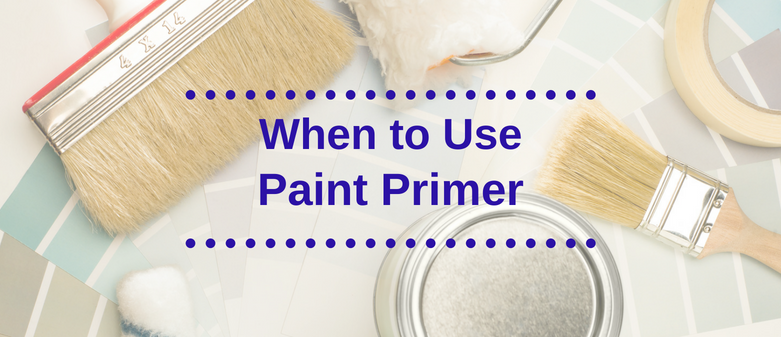Paint primer can work miracles, but sometimes it’s not necessary. If you want the best results when painting, let’s start at the beginning with answers to a few basic questions.
What does paint primer do?
There are many different types of paint primer all of which are important for extending the life of paint and can be crucial in making your paint job looking better. Although paint companies recommend you always prime before painting and although it generally reveals a better final product, it’s not always vital to do. While priming does generate a great final product, it’s essentially doing the work of painting twice. There are a few situations where the extra work pays off. If one of the following situations describes your paint job, you should go to the effort of priming, because it will generate a far superior final result. (After all, who wants to go to the effort of painting a room, just to have it turn out bad?).
6 Situations when you should you use paint primer
- Are you painting on drywall? Drywall is incredibly porous. If you were to paint straight onto drywall, sure, it would work, but the result would be patchy. Some areas of the wall would look great, but others look as if there’s only a small wash of paint. Using a primer makes the surface smooth, allowing for an even finish of paint and a beautiful final result.
- Are you dramatically changing wall colors? Let’s say that the walls in your kitchen are a deep, navy blue and you want to switch it up to a cheery yellow. Since you’re changing colors from light to dark, you should use a primer. If you don’t, the yellow won’t show up as its true color. You should go over the wall with two to three layers of primer.
- Is your current wall glossy? Painting over glossy paint is like pouring water on oil, it just doesn’t mesh well. To help the new paint stick the glossy paint, lightly sand the wall, before adding a few layers of primer.
- Are the walls not in the best shape? If the walls are marred with water damage, mildew stains, or any other imperfection, you should use a primer so the blemishes don’t peek through. There are specific primers that you should maybe consider using that are focused on things like stain blocking.
- Painting on metal? If you’re hoping to paint on metal, use a primer. It will both make the paint look better and dramatically reduce the change of the metal rusting. When searching for a primer, make sure that the label says “rust inhibiting” or else there’s no guarantee it’ll actually work. (And the last thing you want to do is go to the effort of priming for nothing.)
- Are you switching paint types? If the current layer of paint is oil-based and you’re switching to a latex-based paint, then a layer of primer will help the paint go on smoothly. That being said, there are specific types of primers which work best with paint types. (So, if you’re painting with an oil-based paint, you could use an oil-based primer.) In this scenario, you should consult an expert to find out what primer would work best for you.
When do you NOT need to prime?
- Is the paint a similar color? Let’s say your walls are currently white and you’re hoping to mix it up with a lovely shade of cream. Since the colors are so similar (and you’re making them darker), there’s no reason to prime. This is true for all matching paint colors, as long as the next point is true.
- Are your walls in good shape? Remember when we said that latex-based primers are good for covering stains? And that oil-based primers are good for covering chipped paint? If your walls are a-okay, then there’s no real reason to use primer.
- Are you using a self-priming paint? In recent years, brands have started infusing paint with primer, making everyone’s life easier. You should know that self-priming paints are a good bit thicker than normal paint. Self-priming paint works best on interior walls, specifically drywall and walls that just need to be repainted.
While priming might be a hassle, it’s certainly worth the extra effort if your walls aren’t in a top-notch condition. If you’re in doubt about the state of your walls (or any of these factors), you should use primer. It’s better to prime than to end up with your hard work going to waste.
Trelora real estate serves the Colorado Front Range and Seattle Metro Area and our mission is simple: full service real estate for a fraction of the cost. When you hire a traditional agent to help you buy or sell your home, you pay that agent 3-6% of the home’s value.
When you hire Trelora, you pay 1% rather than a variable commission on the price of your home. You’ll also get best-in-class customer service, a team of expert agents who close hundreds of deals per year, a proprietary technology platform that puts you in the driver’s seat.
How can we help you?
Christopher has been been in the Real Estate industry for 8 years and has had the opportunity to close over 1,000 deals while acting as the Managing Broker for thousands more. Christopher is passionate about continuing to find ways to simplify, maximize, and serve Trelora’s clients exceptionally well and spends his time building teams to deliver high levels of service. When not doing real estate Christopher can be seen training for marathons and ultra relays with his 2 year old daughter, eating pizza, and drinking a steady stream of Diet Coke.
